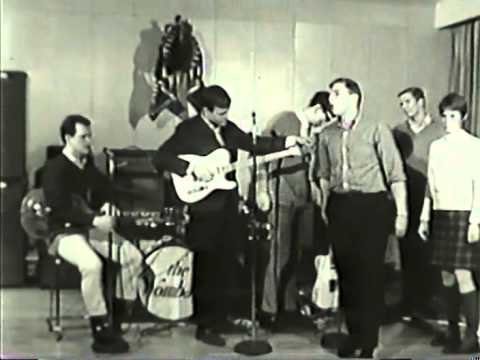The Making of “Where Are The Poets?”
How do you write a song?
Do you start with the melody or the lyrics?
The answer is simple, it can be either way. Often songwriting is collaboration between two or more people each bringing a different element.
In his early career, Elton John had the melodies in his head for his hit songs, but his partner Bernie Taupin had the lyrics.
Musical lyrics are a form of poetry that eventually get set to music, and as we know, poetry can be written in many different forms.
In the spring of 1968 the Metropolitan Educational Television Association of Toronto commissioned a film to be made showcasing the relationship between poetry and music.
When completed, this work was shown on educational television stations across Canada as a means of fostering an appreciation for how lyrics and melody could be fused together to create the hundreds of new pop songs flooding the airwaves.
The end product turned out to be thirty minute black and white period piece of high school life in 1968, entitled ‘Where Are The Poets?’
What is amazing about this film is that it uses real life teachers and students to play all the roles, not actors or stand-ins.
Shot at Northern Secondary School and various locations around Toronto, the teachers at Northern where completely responsible for the script. The production team was supplied by META.
The storyline deals with one all male senior class who are asked to write Japanese Haiku poems in an English class. After their initial shock and protests, the boys get into it.
One of the students, Cam, plays guitar in a rock band, The Wombats, and the scene shifts to a band practice session where a new song writer, Bob, shows up to have his lyrics put to music.
The film shifts back to the school to reveal the student’s attempts at writing their Haikus.
What transpires next is a series of vignettes showing the individual Haikus spoken by the students and filmed in different locations in and outside of the school. The subject matter and the settings are as diverse as the boys themselves.
If one were to look back at the year 1968 in North America, you would see extreme civil turmoil in the United States, contrasted by a naive innocence in Canada.
As a Canadian, I have always had a great fondness and respect for the United States. I have travelled the country extensively and have many American friends.
In 1968 with the Viet Nam war raging, I would watch the U.S. evening news every chance I could, often numb with emotion and stunned at the scenes taking place on the screen.
Those young boys over there were my age or younger, and had I been born one hundred miles to the south, I could very well have been there myself.
1968 was a cruel year for the Americans.
The Tet offensive and My Lai massacre in Viet Nam were bad enough, but at home violent racial tension and militant student activism against the war were shaking the very foundation of the nation.
Then came the unspeakable, the assassinations of Martin Luther King and Bobby Kennedy within months of each other.
I was deeply affected by all these events and wondered where and how it all would end.
But the citizens of the United States are a strong, resilient people, and they not only carried on, they eventually found a form of harmony and prosperity that most of their population could live with.
Canada was just starting to find itself in 1968.
We finally had our own flag, the red and white Maple Leaf, and our first World Fair, Expo ’67 in Montreal, gave us a sense if international presence we had never felt before.
While our military had been exemplary in fighting the two World Wars, there was no immediate threat to our national survival on the horizon, with one exception.
Our destiny was to be shaped by one charismatic individual, Pierre Elliott Trudeau, who became our fifteenth Prime Minister in June of 1968.
He was a lawyer, intellectual, and liberal activist, but his most important trait for many voters was the fact that he was a swinging bachelor and the ultimate ladies man.
‘Trudeaumania’ swept the nation, and for first time in our history we had a modern-day hip politician who had a strong vision of our future.
His political policies changed Canada forever, and one could also say that he actually saved Canada when he called out our military to stop a Quebec separatist insurrection in Montreal during what we call the October Crisis of 1970.
So this is the context and times that should be kept in mind while viewing ‘Where Are The Poets?.
The people in this film could be either American or Canadians, so closely knit are our cultures and values.
My personal connection with the film is that the student ‘Cam,’ was my best and life-long friend, and I was the drummer in the Wombats.
The rehearsal segment was filmed in our basement, and in the band along with Cam and me were my brother Martin, and another set of brothers, Tom and Jim Dunlop.
Music was a huge part of my upbringing. My father Ralph was an accomplished pianist, and I can remember him singing ‘I’ve got a lovely bunch of coconuts’ to me as I sat beside him on the stool.
Show tunes of the 50’s and 60’s were always playing on our stereo, and Frank Sinatra was the king at our house. My dad would play along on his Hammond organ, which we later commandeered for the Wombats.
Ralph also played the gut bucket (a wash tub bass) in a trio that included Cam’s dad Allen on guitar and another friend, Dave on snare drum. They always had a ball singing and carousing when they played.
I started piano lessons young, but foolishly gave them up because it wasn’t cool. What a mistake. The drums were cool, but you couldn’t create melody, just rhythm. Regrets? A few, but playing in a band in the 1960’s was ‘far out,’ as they say.
1968 was a year of wonderful music.
The Beatles’ ‘Hey Jude’ was the number one song, but Otis Redding’ ‘Sittin’ On The Dock Of The Bay,’ Cream’s ‘Sunshine Of Your Love,’ and Simon and Garfunkle’s ‘Mrs. Robinson’ and many many more were all great hits.
Every single song written in 1968 and in the years before and after started with melody and lyrics.
Poetry and musicality.
That is essence of ‘Where Are The Poets?’
The words and music of our times.
When viewing this film, please understand that this is an amateur production shot almost fifty years ago, so the sound, particularly in the beginning scenes is less than Dolby digital.
Once you accept that and carry on, look into those young eyes and listen to the questioning voices of the student actors and you will see their innocence and hope.
Then you may remember what it was like to be a teenager with the world at your doorstep and a song in your heart.


